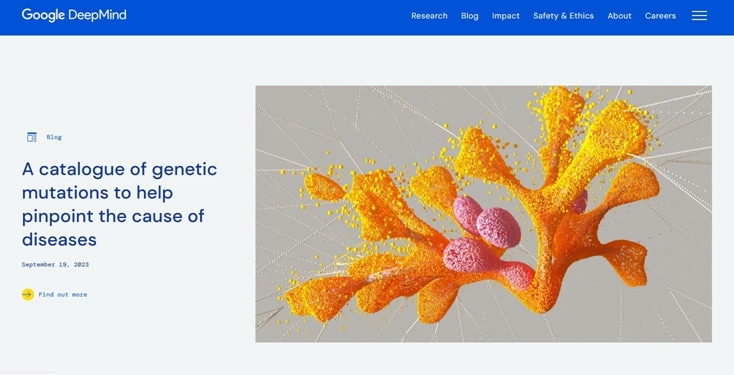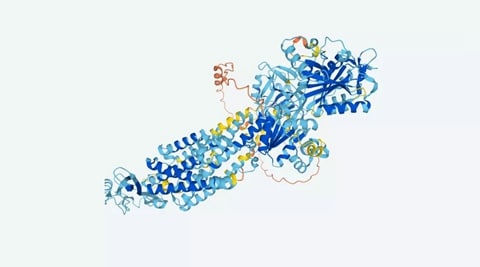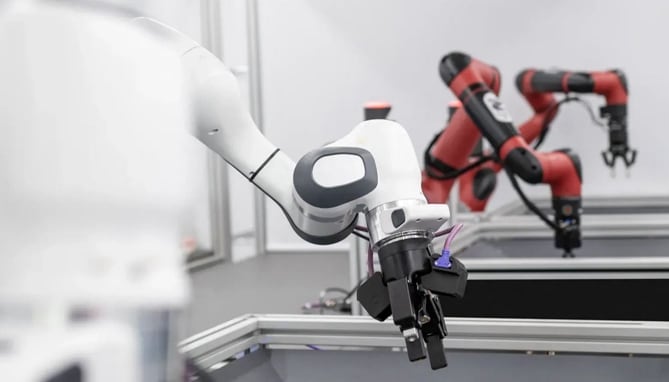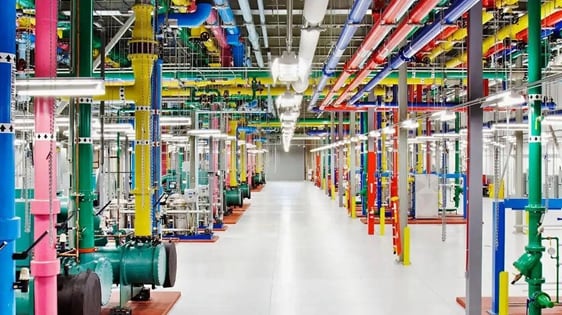Alphabet Inc. acquired the British-based general-purpose AI (AGI), Google DeepMind AI, which is poised to have a real-world impact. The DeepMind is a system of artificial intelligence used to crack a broad range of problems. So far, AI systems have solved the complex game Go and explain the 3D folding of proteins. Google DeepMind AI has also improved energy-saving efficiency and identifying certain diseases. With more products expected to be produced under this AI system, let’s have a look at how it works and its applications.
In this article
A cross-platform for making videos anywhere for all creators with AI features!

Part 1. Introducing Google DeepMind: Definition and History
The main aim of introducing DeepMind was to "solve intelligence" and "advance science." Unlike other AI systems that are programmed for specific tasks, DeepMind learns from its own experience. These innovations brought DeepMind to the attention of Google. Since its acquisition, DeepMind has had some notable wins.

For a while, Google DeepMind AI has been used for research and development purposes. However, as AI becomes more robust, the products of this laboratory are becoming more evident. Recently, DeepMind opened a unit called DeepMind Ethics and Society that aims to address ethical questions raised about AI. Other contributions by Google DeepMind in the recent past include:
- Deep Mind Sparrow: A chatbot designed to answer questions correctly, and reduce the risk of inappropriate and unsafe answers.
- Deep Mind Gato: A deep neural network for complex tasks. It exhibits multimodality in dialogues, controlling a robot arm, playing video games, stacking blocks, and more.
- AlphaGo: The first computer program that defeated a professional human Go player
- AlphaStar: An AI-mastered StarCraft II, which is a Real-Time Strategy (RTS) game
- AlphaFold: A system that predicts the 3D structure of proteins from their amino acid sequence
- AlphaCode: An AI system that can write computer programs on the same level as competitive programmers
- AlphaZero: A system that plays chess, Go, and shogi at a superhuman level
- WaveNet: An advanced text-to-speech technology, which creates natural-sounding speech from raw audio signal
DeepMind's work has the potential to revolutionize many aspects of society. The AlphaFold can be used to develop new drugs and therapies. On the other hand, AlphaZero has the potential to improve the performance of logistics systems. With the growing body of research under DeepMind, the company will venture into more areas. This sets the AI laboratory as a powerhouse that will revolutionize industries, redefining the limits of artificial intelligence.

Background and History of DeepMind AI
Google DeepMind is an AI research laboratory based in Britain. The company was originally founded in 2010 by three scientists as DeepMind Technologies. It was later acquired by Google in 2014 for £400 million. The acquisition gave the company access to leading AI experts while Alpahet Inc. became the owner of this revolutionary product. The company has now grown to over 700 employees with multiple global offices.
DeepMind comprises a team of renowned AI experts in various fields. They focus on computer science, neuroscience, mathematics, and physics. In addition, access to Google's vast network of data centers has enabled DeepMinded to challenge more areas. One of the ways is by collaborating with Google Health and Google Cloud in deploying AI-generated solutions.
Try AI Filmora Free! Click here!
Part 2. How DeepMind AI Works: Structure and Technology
DeepMind's AI uses deep learning language on a convolutional neural network. The network comprises a model-free reinforcement technique known as Q-learning. It allows DeepMind to become more accurate in predicting outcomes. This approach has challenged DeepMind technology to learn games on its own.
The technology emulates the organization of the human visual cortex. It allows DeepMind to analyze vast amounts of data, and identify impractical patterns. The artificial neural networks comprise a network of interconnected nodes. These modes work like the human brain to solve problems. They can learn complex patterns by adjusting the weights of the connections. When tasked to beat the library of Atari games, Google DeepMind AI used this approach to understand the games. After a while, the AI could play the game better and more efficiently than humans.
Understand the Learning Structure of the DeepMind's models
DeepMind's AI systems focus on reinforcement learning to solve complex problems. In AlphaGo, the AI learns the patterns of the game to predict the next best moves to make. The neural networks learn from data and make predictions. In AlphaFold, the AI uses a neural network to learn the patterns of protein folding. It then predicts the 3D structure of proteins based on their amino acid sequence.
DeepMind also constantly learns from its own experience. It observes how it behaves in specific environments. During training, the AI is rewarded for actions that produce desired outcomes. It is then penalized for undesirable outcomes. For instance, AlphaGo was trained on a dataset of millions of Go games. It learned to play Go against itself millions of times where it was rewarded for winning and penalized for losing. This helped the AI learn moves that were most likely to lead to victory.
Similarly, AlphaFold was trained on a dataset of millions of protein structures. It predicts the 3D structure of proteins by playing against itself millions of times. It was rewarded for making accurate predictions and penalized for inaccurate ones. Over time, AlphaFold became more accurate in predicting the 3D structure of proteins.
Part 3. What DeepMind AI Can Do: Major Contributions and Successes
DeepMind has made significant contributions to the society at large. This includes systems with superhuman performance in complex board games. There is also robotics that can walk and run and 3D structure predictors. Since its inception in 2020, the company has developed several AI technologies that help in the identification of eye diseases and optimizing the performance of certain devices. Put simply, the DeepMind AI by Google seeks to use the capabilities of AI algorithms to solve problems that have full benefits to humanity. Let’s have a look at some of the major successes of these AI systems.
1. Game Playing
AlphaGo has achieved superhuman performance in the game of Go. In 2016, AlphaGo marked a remarkable achievement by defeating Lee Sedol, a professional Go. This was a major milestone that showed AI can master complex games that were previously exclusive to human domains. The AI’s victory over the South Korean champion was a defining moment as DeepMind became the only machine to beat a human in the competition.

2. Healthcare
AlphaFold predicts the 3D structure of proteins from their amino acid sequence. Researchers are now using this AI system to study proteins and develop new drugs. Most notably, AlphaFold was used to develop drugs for COVID-19 and Alzheimer's disease. The breakthrough in proteomics has the potential to revolutionize scientific research and develop life-saving medicines.

3. Robotics
Robocat is a self-improving robot agent operates different robotic arms. It also solves tasks from only a few demonstrations. The robotics uses self-generated data to improve its effectiveness. The approach is expected to help improve similar building processes. With the continuous advancements in the DeepMind’s technology, its capabilities are expanding. This is opening doors for technology, reshaping the boundaries between man and machine.

4. Energy efficiency
DeepMind has developed an AI system to improve power efficiency in Google's data centers. Using reinforcement learning, the AI optimized energy consumption, reducing cooling bills by 40%. DeepMind has also been used to improve the accuracy of traffic slowdown predictions in Google Maps. The technology has been vital in Android’s adaptive brightness and battery features.

Conclusion
DeepMind is a leading AI research organization. It has developed advanced AI systems for solving complex problems in the society. The work that is in progress under the umbrella of DeepMind AI is expected to impact more aspects of society. As the AI system continues to evolve and grow, it is expected that its applications will become more diverse. If you are interested in video editing, we recommend trying out Wondershare Filmora. The versatile video editing software offers a variety of AI features, including an image generator and editor.
Try Filmora out Free! Click here!

